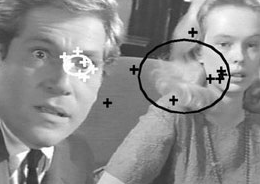Different world

“How many of you have counted the number of light fixtures in this room?” Ami Klin asked his audience of scientists Friday morning at the Cell Symposia: Autism Spectrum Disorders: From Mechanisms to Therapies conference in Washington, D.C, a satellite meeting of the Society for Neuroscience annual meeting.
No one from the audience raised a hand. Someone with autism, Klin went on, may very well have counted the lights, or analyzed the busy floral pattern on the carpet of the hotel ballroom in which they sat.
This was one of the many examples in Klin’s talk to illustrate the unique way that people with autism experience the world. And yet most neuroscientists who study autism, he argued, focus on genes, pathways and mouse models, and rarely think about the day-to-day experience of people with the disorder.
To try to change that, Klin and his colleagues at the Marcus Autism Center in Atlanta, Georgia, are proposing a “primer for neuroscientists.” Through this program, researchers would be able to visit the center’s severe behavior unit for three days and observe the many complex behaviors of children with the disorder.
“I want you guys to know what autism is about,” Klin told the audience. “I think it will inspire you and constrain some of your hypotheses.”
Over the past decade or so, Klin and collaborator Warren Jones have shown that children with autism differ from typically developing children, who from birth are exquisitely attuned to eyes, faces and others. “We are obsessed with understanding others,” Klin said. Children with autism, in contrast, live in a world of objects.
In his talk yesterday, Klin described a five-minute test that could serve as a biological assay for autism. In the test, a child watches a video clip while hooked up to an eye-tracking device. A computer program then merges data from several children and creates heat maps of their visual activity, with different colors indicating levels of statistical certainty. Healthy children tend to look at faces, whereas children with autism look at objects, Klin’s team has found.
“[Children with autism] are constructing a world that is entirely different,” Klin said. “So remember that.”
This article was originally published on Different world







